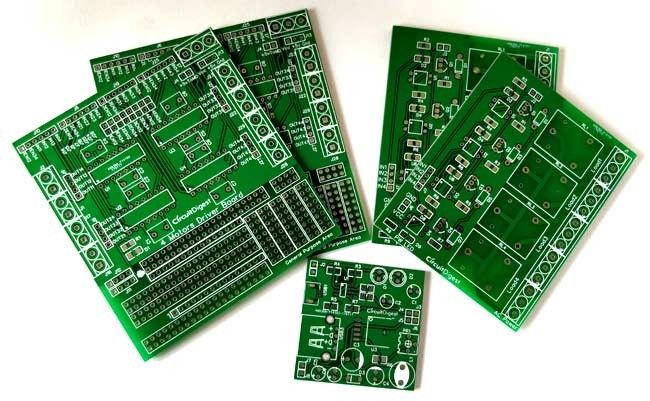When engineers just entered the PCB maintanence industry, the most contacted are all kinds of PCB circuit boards. Attentive engineers can find that most of them Choose Green as PCB Solder Resist Color. Why? Painting is a technical requirement.
First, both sides of the PCB are copper layers. In the production of PCB boards, the copper layer is manufactured by addition or subtraction, and finally a smooth and unprotected surface is obtained.
Although the chemical properties of copper are not as active as aluminum, iron, magnesium, etc., in the presence of water, pure copper and oxygen are easily oxidized; because of the presence of oxygen and water vapor in the air, the surface of pure copper is in contact with air. The oxidation reaction will occur soon.
Since the thickness of the copper layer in the PCB is very thin, the oxidized copper will become a poor conductor of electricity, which will greatly impair the electrical performance of the entire PCB. In order to prevent copper oxidation, and to separate the soldered and non-welded parts of the PCB during soldering, and to protect the surface of the PCB, engineers invented a special coating. This coating can be easily applied to the surface of the PCB to form a protective layer with a certain thickness and to block copper and air contact. This layer of coating is called a solder mask and the material used is a solder resist.
Generally, we choose green, because the green is less irritating to the eyes, and the production and maintenance personnel are not easy to suffer from eye fatigue when they are staring at the PCB for a long time. There is another reason, because the color commonly used by everyone is green, so the green paint used by the factory is the most, so the cost of using green paint is relatively low.

The difference between a black PCB and a blue PCB, a yellow PCB, and other color PCBs is that the color of the solder resist on the final brush is different. If the PCB design and manufacturing process are exactly the same, the color will not have any effect on the performance and will not have any effect on the heat dissipation.
Regarding the black PCB, since the surface traces are almost completely covered, it causes great difficulty for the later maintenance, so it is a color that is not easy to manufacture and use, and the black PCB has the highest difficulty for the hole registration, so the yield rate is relatively speaking, will be lower than other color PCB boards, so the price of black will be relatively expensive.

The reason why “colors represent high-end or low-end” is that manufacturers prefer to use black PCBs to make high-end products, which are caused by red, blue, green, yellow, etc. To sum up one sentence: the product gives the meaning of the color, not the color gives the meaning of the product.






